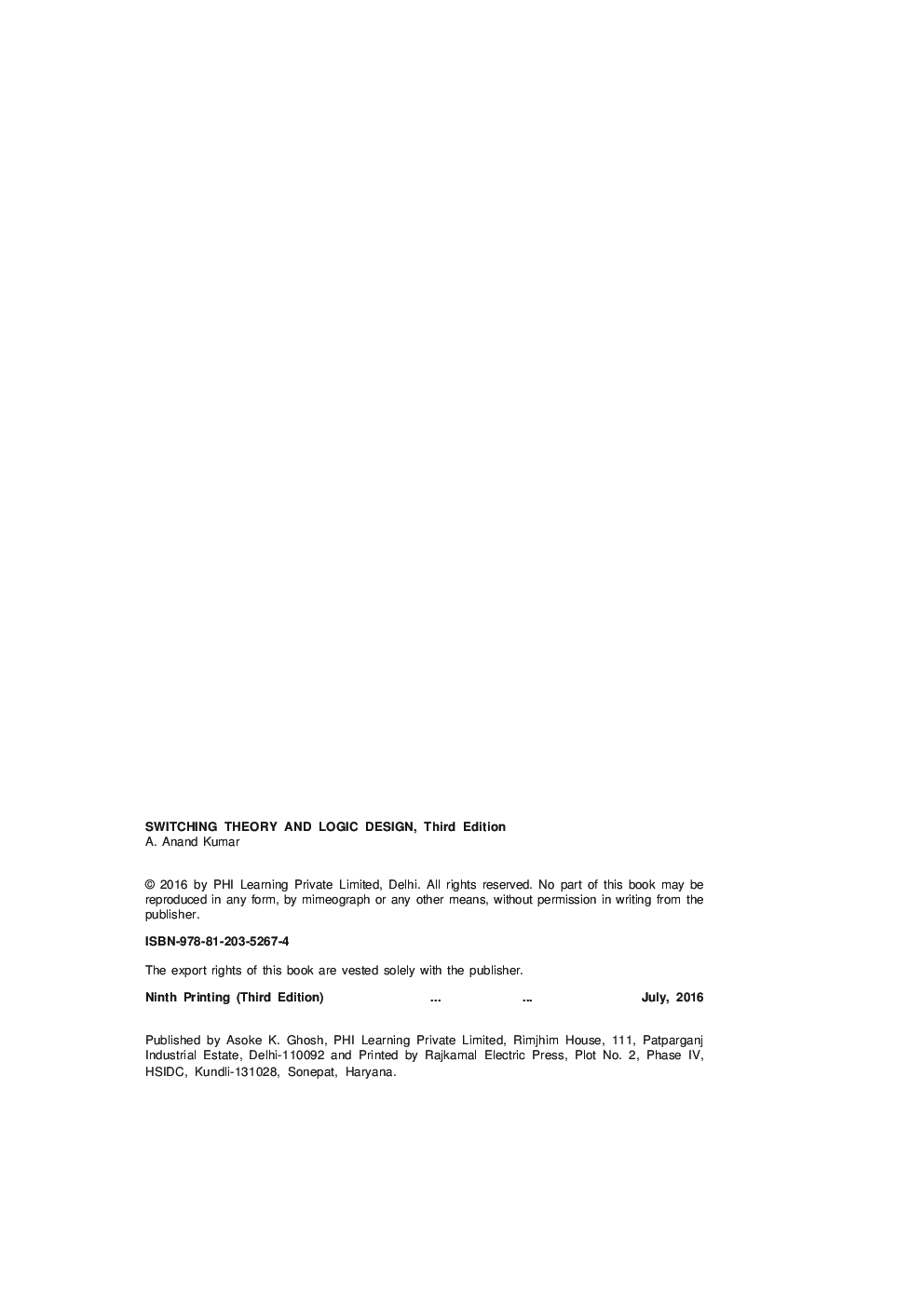This comprehensive text on switching theory and logic design is designed for the undergraduate students of electronics and communication engineering, electrical and electronics engineering, electronics and computers engineering, electronics and instrumentation engineering, telecommunication engineering, computer science and engineering, and information technology. It will also be useful to M.Sc (electronics), M.Sc (computers), AMIE, IETE and diploma students.
Written in a student-friendly style, this book, now in its Third Edition, provides an in-depth knowledge of switching theory and the design techniques of digital circuits. Striking a balance between theory and practice, it covers topics ranging from number systems, binary codes, logic gates and Boolean algebra to minimization using K-maps and tabular method, design of combinational logic circuits, synchronous and asynchronous sequential circuits, and algorithmic state machines. The book discusses threshold gates and programmable logic devices (PLDs). In addition, it elaborates on flip-flops and shift registers.
Each chapter includes several fully worked-out examples so that the students get a thorough grounding in related design concepts.
Short questions with answers, review questions, fill in the blanks, multiple choice questions and problems are provided at the end of each chapter. These help the students test their level of understanding of the subject and prepare for examinations confidently
This book Useful for Engineering students.
INTRODUCTION
1. NUMBER SYSTEMS AND CODES
2. BOOLEAN ALGEBRA AND SWITCHING FUNCTIONS
3. MINIMIZATION OF SWITCHING FUNCTIONS
4. COMBINATIONAL LOGIC DESIGN
5. PROGRAMMABLE LOGIC DEVICES AND THRESHOLD LOGIC
6. SEQUENTIAL CIRCUITS–I
7. SEQUENTIAL CIRCUITS–II
8. ALGORITHMIC STATE MACHINES
Appendix • Glossary
Answers • Index


















